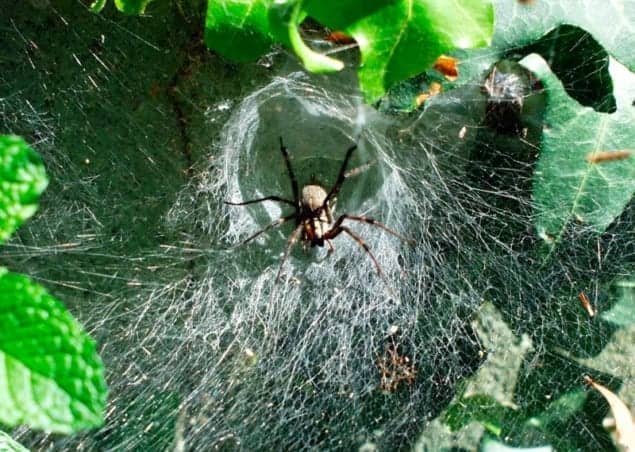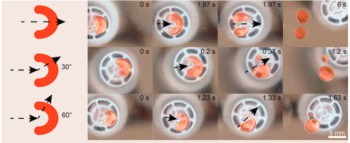
If you are a small insect and find yourself staring into the eight eyes of a hungry spider as it wraps you in its silk, unfortunately, your number really is up. This stringy substance may seem a bit flimsy but the more you struggle, the longer it gets, and it will not snap – its tensile strength exceeds that of high grade steel. Now, a group of researchers in the US and Korea are able to explain, numerically, how spider silk combines strength with extreme ductility to deadly effect.
A spider’s silk is made from basic proteins, including some that form thin, planar crystals called beta sheets. These sheets are connected to each other by hydrogen bonds, which are among the weakest types of chemical bond – far weaker, for example, than the covalent bonds found in most organic molecules. However, by stacking multiple beta sheets, a spider’s silk manages to fail gracefully, with hydrogen bonds breaking one by one under external force.
Markus Beuhler and his colleagues at Massachusetts Institute of Technology, working with researchers at Pohang University of Science and Technology, have studied this silk failure in the finest detail to date. Using a series of computer simulations they found that the strength of spider silk depends on a critical size of crystal within the beta sheets of around 3 nm. Once the crystals are allowed to grow beyond 5 nm, however, the silk suddenly becomes weak and brittle.
“This way of failing has clear advantages to the spider,” Beuhler tells physicsworld.com. “Simple hydrogen bonds make it much easier for a spider to repair damage to its web. A covalent bond, like glass, would break catastrophically.”
Beuhler says that these findings could be used to develop innovative applications, such as tough coatings for cars and non-poisonous surgical equipment. He also envisages the emergence of new materials that could possess the strength and flexibility of spider silk while being made from inherently stronger molecules, such as carbon nanotubes.
“The paper shows improved modelling and some more explanations in terms of shear deformation and involved hydrogen bonds being responsible for the mechanical behaviour,” says Mato Knez at the Max Planck Institute of Microstructure Physics, who was not involved in this research. Knez feels, however, that the work is just another step in a developing research field. “It gives some sort of improvement to the understanding of the model system, which was already present to a certain extent.”
This research is published in Nature Materials.



